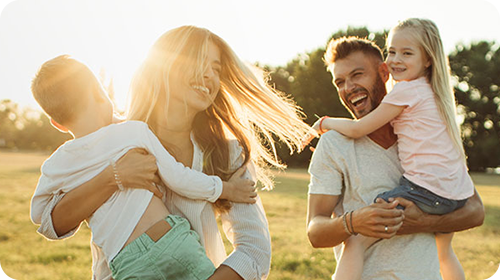You’ve heard the advice many times before, save for retirement. But have you started yet?
Many of you will answer with an unfortunate no. Others of you may be saving yet aren’t sure you’re stashing away enough. Or maybe you had to borrow from the savings you accumulated for the future to help you through the pandemic.
According to the annual Survey of Household Economics and Decisionmaking (SHED) conducted by The Federal Reserve in the fall of 2020, 26% of respondents claimed to have no retirement savings at all. Of the 74% with savings, only about one-third of them felt like they were saving enough, and 9% had to dip into their retirement nest egg to help pay everyday expenses.
In the most recent Retirement Confidence Survey conducted by the EBRI, 39% of those with a retirement savings plan have accumulated assets of more than $250,000. In comparison, only 2% of those without a savings plan have assets totaling more than $250,000.
At first glance, it may seem growing a retirement nest egg is easier for those with employer-sponsored retirement savings plans such as a 401(k) or 403(b). Yet, there are plenty of options (with tax advantages) for small business owners and self-employed people to save for the future.
Importance of Planning for Retirement
Opening a savings or investment account, starting an IRA (Individual Retirement Arrangement aka Individual Retirement Account), or enrolling in a 401(k), does not check the box on retirement planning. To have a proper handle on planning and saving for later in life, you need to do a bit more work.

While there are no guarantees things will work out according to plan, chances are it’ll be challenging without one. You only need to consider the Covid-19 pandemic and other events of 2020-21 to understand that.
We couldn’t predict all that would happen over the last two years, but one thing we should all take away from what we’ve learned is the need for a plan. The seriousness of an estate plan came clearly into focus for many people due to the pandemic. We hope you have one in place but preparing for your future is also essential.
Longer life expectancies, predicted reductions in Social Security payments, the inability to work forever, and no crystal ball to forecast future events are just some of the reasons you must plan and save for life down the road.
Your Planning Steps
Retirement planning is the process of fleshing out your goals, responsibilities, and dreams for the near and distant future and figuring out how you’ll pay for them. Before you stop here because you think you can’t possibly consider life in retirement since you’re struggling to decide what’s for dinner tonight, please reconsider.
You don’t want to delay planning and saving for the future because you think time is on your side. Or because you have no idea what your retirement goals should be. The longer you wait to start investing money for an older you, the more money you’ll need to divert to your savings plan overall to fund the goal of a financially secure retirement.
#1 Envision Later Life
This, of course, will be more challenging the further you are away from age 60. But devoting a bit of time to write down your dreams and goals for the future will help you develop a more solid plan. Consider the following:
- Where you’ll live - Describe the location and style of home or homes and who else will reside with you.
- How you’ll spend your time - Do you want to continue working in your business at least part-time, consult, or start something new? Will you volunteer or watch grandchildren? What hobbies will you enjoy? Will you travel often?
- Start a bucket list of things you’d like to experience - Things you want to learn, see, do, taste, hear, or otherwise enjoy.
#2 Calculate Budgets
You might not love this “b” word, but a budget can be your most supportive friend. A proper budget is a spending plan that helps you stay on track to achieve your financial goals.
This handy calculator can assist you in preparing a budget for today, but keep in mind your expenses will change when determining your retirement numbers. For example, your mortgage payment could be gone, your kids launched, and you’ll no longer be setting aside money to save for retirement. But your medical expenses will likely increase, and you should also consider your long-term care needs.
When budgeting for retirement, it’s helpful to prepare three - don’t worry, it won’t take triple the time.
First, create a baseline budget. This one would cover your minimum basic necessities. While the hope is you’d be able to spend beyond the basics, you must understand the least amount you need to pay for your daily living.
Next, you’ll establish an optimal budget. It should not only ensure your day-to-day necessities are covered but include several wants thrown in for a comfortable retirement.
Lastly, add things from your dream retirement list to the optimal budget to help you see how big your nest egg needs to grow to achieve those dreams.
You can estimate your retirement number once you calculate your minimum, optimal, and dreamy expenses. Using the popular 4% rule, you multiply the expected yearly cost of retirement by 25 (or a more conservative 30) to arrive at a nest egg goal. That number is the target value all your investable assets combined will need to reach to fund 30 non-working years.
For example, a retirement lifestyle costing $60,000/year will require a nest egg of $1.5M - $1.8M depending on how financially conservative you are. A $100,000/year budget will need a $2.5M - $3M to fund it.
However, there are more ways to fund a retirement. Now that you have a better idea of what retirement will cost let’s explore how you’ll pay for yours.

#3 Determine How to Pay for Retirement
People use various sources to pay for their golden years, including savings and investments, social security, pensions, and income from working, rental properties, business ownership, and side gig/task jobs.
The more sources of income you have, the lower your nest egg number needs to be.
Take a moment to jot down potential sources of funds for your retirement. Include those you hope to obtain in addition to any already in the works. Also, list the current values of any funds you already have.
Then set a realistic estimate of what you can expect in annual income from all sources other than your investment accounts (stocks/bonds/mutual funds/etc.).
It might look something like this for annual funds available:
- Social Security Income - $20,000
- Rental Property Net Income - $10,000
- Business Net Income - $20,000
Now, take the total of all those sources and subtract it from your annual retirement budget - $90,000 budget - $50,000 income = $40,000 needed. Finally, take the $40,000 shortfall and multiply it by 25 - $40,000 x 25 = $1M. So instead of needing $2.25M in investments to fund a $90K year retirement, you’re looking at $1M instead.
A few important notes - these are just rough numbers to help you arrive at estimates. These calculations aren’t taking into account inflation, potential cuts to Social Security, the fact that you may sell your business or rental property during retirement, and any other factors that could affect your actual income and expenses in your golden years. Speaking with a certified fee-only financial professional is recommended if you need help in developing your plans.
Savings Tools at Your Disposal
While you might not have an outside entity contributing to your retirement plan when you’re self-employed, business owners still have plenty of options for saving and investing for retirement.
Tax-Advantaged Accounts: IRAs and Self-employed Retirement Plans
A tax-advantaged account allows you to lower your tax liability by reducing the taxable income amount of your earnings when you contribute to the plan or at the time you withdraw the funds in retirement.
Traditional & Roth IRAs / Spousal IRA
Traditional IRAs allow individuals to invest pretax income on a tax-deferral basis meaning taxes are not due until you withdraw money from the plan. On the other hand, with a Roth IRA, contributions are made with money you’ve already paid taxes on, allowing for tax-free growth. Non-working spouses may also be eligible for either IRA.
|
Traditional IRA |
Roth IRA |
|
Pros:
The plan is open to anyone with earned income (and their nonworking spouse filing jointly - termed a spousal IRA)
Defers taxes until funds are withdrawn |
Pros:
Open to those with earned income (and their nonworking spouse filing jointly)
Ability to pay income taxes today on retirement funds that won’t be withdrawn until later |
|
Cons:
Annual maximum contribution limits. For 2021 the allowed amount is $6,000 (if over 50 years of age, then $7,000).
Your tax filing status and modified adjusted gross income may limit the tax benefits of this type of plan. |
Cons:
Maximum annual contribution limits - for 2021 is $6,000 (if over age 50 limit is $7,000).
Contribution limits are based on your tax filing status and income.
Contributions are not tax-deductible |
Individual or Solo 401(k)
For self-employed business owners with no employees, the Individual 401(k), aka solo 401(k) or one participant 401(k), is a popular choice. Contributions to a solo 401(k) can be made as both employer and employee.
As an employee, you can choose to defer 100% of your earned self-employment income up to annual contribution limits, $19,500 in 2021, or $26,000 when 50 or over. As an employer, contributions of up to 25% of compensation as defined by the plan or calculated contributions are made.
The maximum annual total contribution for 2021 is the lesser of $58,000, $64,500 for those 55 and older, or 100% of compensation.
Savings Incentive Match Plan for Employees (SIMPLE IRA)
The SIMPLE IRA works for business owners and self-employed people who meet specific eligibility requirements. Businesses must be small in size (typically less than 100 employees) and not offer any other retirement savings plans. Typically, plans include all employees who were compensated at least $5,000 by you during any two preceding calendar years and expect to receive at least that amount in the current year.
Eligible employees can fund their SIMPLE IRA (must be a traditional IRA, not a Roth) through tax-deferred elective deferrals up to $13,500 in 2021. Those age 50 or over are also entitled to catch-up contributions and can defer an additional $3,000.
Tax-deductible employer contributions are either 2% of each employee’s compensation, whether the employee contributes or not, or a 3% dollar-for-dollar match of the employee’s contribution. Employers can choose annually which method to use but must inform employees of the chosen method during the election period for the following year.
Simplified Employee Pension Individual Retirement Account (SEP-IRA)
A SEP plan allows companies of any size (even self-employed businesses) to contribute to traditional IRAs (SEP-IRAs) set up for employees.
The SEP-IRA is a tax-deductible plan with several advantages for self-employed individuals (and their employees), including low administrative costs and easy start-up. Plus, you get to decide your annual contribution amount from year to year. In a low-income year, you can opt to make minimal or no contributions.
Contributions to a SEP are made by the employer only and must be equal between all eligible employees. For 2021, contributions can be the lesser of – 25% of your net earnings from self-employment (not including contributions for yourself) or $58,000.
After-Tax Savings & Investing Options
In addition to the tax-advantaged accounts listed above, there’s a multitude of saving and investing vehicles to grow your retirement nest egg, including:
- Bank/Credit Union Products such as CDs and Money Market Accounts
- Brokerage Accounts for stocks, bonds, mutual funds, index funds, and ETFs
- Wide variety of alternative Investments such as cryptocurrency, real estate, and Worthy Bonds
- Annuity and Whole Life Insurance Products
Aside from the CDs and money market accounts, these investment vehicles carry risk, and many are complex. Do your homework before putting your money in something you don’t understand.

Time for a Reality Check
You should now have a good idea of what retirement will cost, what sources of income you have or need to develop, how much you need to save, and various tools you can use to amass your nest egg.
But if you’re not on track to reach a comfortable retirement at your target age, consider this your wake-up call. Don’t wait another minute to start saving - it’s well past time to put yourself first.
Make Up for Lost Time
You might be feeling woefully behind, yet you can make tremendous progress if you focus, keep your financial goals front and center, and adapt as necessary. If you don’t already have one, start by opening a retirement savings account and contribute as much as possible. When that’s not enough to get you on track, you’ll need to use some, if not all, of the tactics below.
Find more space in your current budget:
- Cut unnecessary expenses, such as subscriptions and memberships you don’t use, and save what you’re no longer spending.
- Rein in your grocery budget.
- Eliminate high-interest debt to free up even more money for retirement savings; pay yourself instead of paying banks interest.
- Consider drastic moves such as downsizing or moving to a lower cost of living area for substantial savings on housing costs.
- Find ways to increase household income, such as selling items you don’t need, renting out extra space in your home, or performing services you can do when you’re not attending to your business. If your spouse is not currently employed, explore options with them to earn some income.
Adjust your retirement age target
Perhaps you’ll need to work longer or hold off on selling your business for a few years. Shortening the length of your retirement by even a year or two reduces the amount of savings you’ll need.
Plan to delay Social Security
Each year you postpone drawing Social Security payments from age 62 to 70 will increase your benefits when you draw. To find out your current estimated benefits, visit https://www.ssa.gov/myaccount/.
Revise your retirement spending plan
Lowering your retirement budget is one of the quickest ways to reduce the amount of money you need in retirement, yet you must be realistic. A $10,000 a year reduction might be possible if you’re currently budgeting to spend $120,000/year, but less likely if your current annual budget is $40,000.
Bottom Line
The reason for previously procrastinating on your retirement planning doesn’t really matter. Today, we just want you to start. Develop a plan, open your savings and investment accounts, and grow your nest egg to secure a comfortable retirement. Because no matter your current age, your golden years will be here before you know it.






